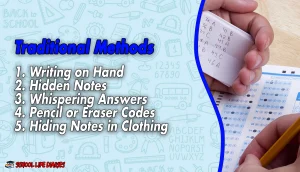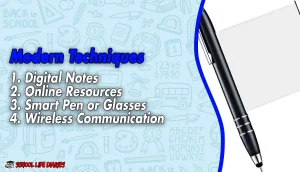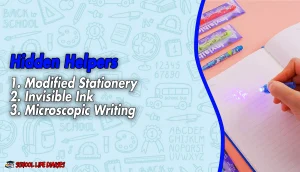Welcome to the intriguing world of test cheating! While cheating on a test is not something we condone or encourage, it’s important to understand the various methods used by individuals to gain an unfair advantage through different Exams Cheating Gadgets. In this comprehensive guide, we will explore the techniques, risks, and consequences on how to cheat on a test. Please note that this article is purely for educational purposes and aims to promote academic integrity.
The Art of Cheating
Cheating on a test is an age-old practice that students have employed throughout history. The desire to achieve better grades or overcome academic challenges can sometimes lead individuals to explore dishonest means. However, it’s essential to remember that cheating undermines the true purpose of education and personal growth.
Preparing for Cheating
Before delving into the different methods, it’s crucial to emphasize that honest preparation is always the best approach to academic success. Diligent studying, active engagement in class, and seeking help from teachers and peers are far more valuable strategies than cheating. However, for the sake of knowledge, let’s examine some common cheating methods.
Traditional Methods
1. Writing on Hand:
One of the simplest and oldest methods is writing answers or key information in the palm of your hand. Be careful not to make it too obvious or get caught by vigilant instructors.
2. Hidden Notes:
Another traditional method involves creating tiny cheat sheets on small pieces of paper and concealing them in inconspicuous places, such as inside a pencil case or beneath the desk.
3. Whispering Answers:
Collaborating with a fellow student and whispering answers during the test can be an effective way to cheat. However, it’s crucial to maintain subtlety to avoid suspicion.
4. Pencil or Eraser Codes:
Encoding information on a pencil or eraser by making specific marks or using a specific pattern can serve as a discreet method of cheating.
5. Hiding Notes in Clothing:
By creatively placing cheat sheets or notes inside clothing, students can access information during an exam without raising suspicion.
Modern Techniques
1. Digital Notes:
With the advancement of technology, students have begun utilizing digital methods for cheating. Storing notes on smartwatches, programmable calculators, or even smartphones can provide quick access to information.
2. Online Resources:
The internet offers a vast array of information that can be used for cheating. Students may seek answers on online forums, and websites, or even purchase pre-written essays.
3. Smart Pen or Glasses:
Innovative devices like smart pens or glasses can discreetly record or display information during exams. These gadgets are often difficult to detect, giving cheaters an unfair advantage.
4. Wireless Communication:
Using covert communication devices, such as hidden earpieces or Bluetooth-enabled devices, allows students to receive answers from accomplices outside the examination hall.
Hidden Helpers
1. Modified Stationery:
Altering regular stationery items can provide a secret space for hiding cheat sheets. Hollow pens or erasers can be used to store small notes or answers.
2. Invisible Ink:
Using invisible ink pens to write down answers can be an effective way to cheat. The writing becomes visible under specific lighting conditions or with the aid of special devices.
3. Microscopic Writing:
Extremely small handwriting techniques, often with the help of a magnifying glass, can be used to cram an immense amount of information onto a single cheat sheet.
Avoiding Detection
Cheating carries significant risks, as educational institutions employ various measures to detect and prevent dishonest behavior. Here are some tips to avoid detection:
- Be discreet and avoid drawing unnecessary attention.
- Memorize key information to minimize the need for visible cheat sheets.
- Practice your cheating methods beforehand to become proficient and confident.
- Stay vigilant and be aware of the invigilators’ movements and attention.
- Dispose of any incriminating evidence after the test to avoid suspicion.
Consequences and Ethical Considerations
While cheating may seem like a tempting shortcut, it’s essential to understand the potential consequences. Academic institutions take cheating seriously, and if caught, students may face severe penalties such as failing grades, academic probation, or even expulsion. Moreover, cheating undermines the integrity of the educational system and devalues the accomplishments of hardworking students.
FAQs
Q: Is cheating on a test worth the risk?
A: Absolutely not. Cheating may provide temporary benefits, but the long-term consequences far outweigh any potential advantages. It damages your credibility, undermines your education, and hampers personal growth.
Q: Can technology help prevent cheating?
A: Yes, educational institutions are employing advanced technology to detect and prevent cheating. Tools like plagiarism checkers, remote proctoring software, and surveillance systems aid in maintaining academic integrity.
Q: How can I overcome the temptation to cheat?
A: Focus on the value of genuine learning, personal growth, and the satisfaction of accomplishing tasks through your efforts. Seek help from teachers, develop effective study habits, and adopt a positive mindset towards education.
Q: What should I do if I witness someone cheating?
A: It is crucial to report any observed cheating to the appropriate authorities, such as teachers or school administrators. By doing so, you contribute to maintaining a fair and just academic environment.
Q: Can cheating ever be justified?
A: No, cheating can never be justified. Academic integrity is essential for personal growth, ethical development, and the advancement of society as a whole. Honest effort and hard work are the foundations of success.
Q: Are there any legal consequences to cheating?
A: While cheating itself may not have legal repercussions, it can lead to a tarnished reputation, impacting future opportunities, such as college admissions or employment prospects.
Conclusion: How To Cheat On A Test?
In conclusion, cheating on a test is a practice that undermines the principles of education and personal development. While it’s important to be aware of the methods used by cheaters, it is far more beneficial to embrace honest study techniques and uphold academic integrity. Remember, the journey of learning is about growth, knowledge, and becoming the best version of yourself.







